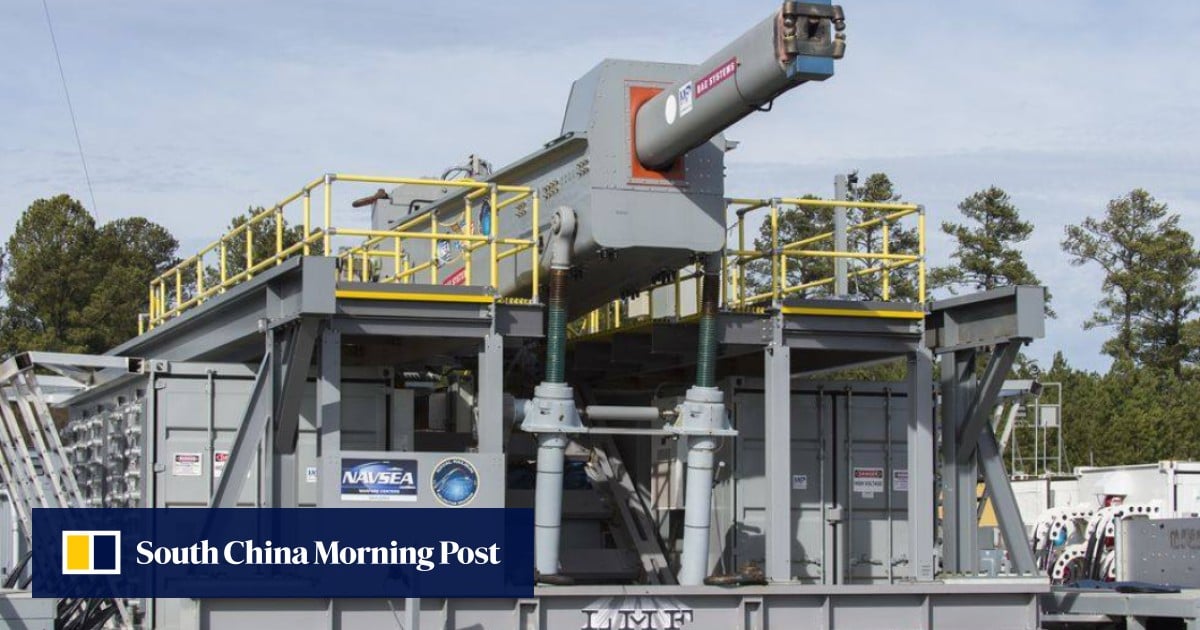The PLA and Chinese MIC is nortoriouslt secretive, so a publication like this implies that the project is quite far along and that most of the big hurdles have been cleared. Remember that the Chinese MIC is almost all state owned so it doesn’t have to publish puff pieces of appease shareholders.
That’s a good point, they don’t really need to brag about it.
deleted by creator
I’m guessing this is a lot harder to stop than a drone though. If you’re getting a slug of solid metal coming at you at hypersonic speeds, presumably destroying or deflecting it is a non trivial problem. And I’m guessing this kind of weapons would be mounted on ships with nuclear reactors?
deleted by creator
With respect, I think that taking lessons in naval warfare from ground warfare is a bit questionable.
Due to the ranges involved naval warfare, drones of sufficient range and power and communications capability are already going to be much larger and more expensive than your average ground combat drone. Not only that, but they have to carry much larger payloads to reliably take out a ship, and they have to be fast and evasive enough to be reasonably capable of penetrating the layered defences of a naval battlegroup when massed. Not only that, but naval drones have to be navalized (made resistant to salt water spray, collapsible wings for storage, etc) and launch platforms are expensive ships, not cheap patches of dirt.
None of the above are problems for ground combat, which makes ground combat suicide drones much cheaper to produce and field in numbers. If you look at current prototypes for naval strike drones, they mostly look like slightly smaller jet fighters instead of much smaller ground combat drones.
deleted by creator
Well like you say, we don’t have any insight into the PLAN planning or R&D projects. From the information we do have, the Type 055 Destroyer has an integrated power system that some articles have mooted to be laying the groundwork for a future railgun system. It’s possible that the PLAN has also made some sort of breakthrough (or is close to doing so) with the power miniaturization or storage systems that would be necessary to fit one onto a Type 055. Either that, or the PLAN is doing this as a vanity project, which is pretty out of character for them.
As for hypersonics, naval missiles are housed in VLS silos that can’t be reloaded at sea. Even if the mooted railgun can only fire a few dozen or so shots before requiring a barrel replacement, that still works out favorably if the barrel replacement can be done at sea. Also consider that it’s possible that hypersonic missiles might still be impacted by jamming or some future interception system, whereas a metal slug travelling a mach 3 tends to not care about either. As for a sub surface nuke, setting aside the very obvious environmental damage (China plans to fight near it’s home waters so can’t be so blase about nuclear contamination), using any sort of nuclear weapon is a huge step up the escalation ladder and would be only one step down from striking a US base with nukes.
I’m not an expert on this stuff either obviously, so I’m just speculating on the benefits China might see in is pursuing this. It’s worth noting that these things aren’t mutually exclusive. I can see how this could be used for specific situations while drones are used as a more general type of weapon. Kind of how Russia uses hypersonics for some pinpoint strikes on high value targets.
I figure there is a reason they’re pursuing this, but could also be a moonshot project where they don’t necessarily expect it to become practical, but want to see how far they can push it. As you said, they’re bound to discover some new tech through this process so even if the particular application doesn’t pan out, it’s not a waste of time to understand this stuff.
deleted by creator
I wonder if you could use a magnetic containment field or something similar ways plasma is controlled in a fusion reactor.
deleted by creator
The goals are a bit different though. The problem with plasma containment in fusion reactors is that plasma moves in unpredictable ways, and the amount of energy you need for a reliable containment field is higher than the energy output of the reactor. For this sort of application you’d be using the field for a containment of a metal slug and it just means eating more power. Regarding the power issue, it’s worth noting that it would likely use supercapacitors. So you don’t necessarily need a powerplant that can output 25 MW directly. You’d just charge up the capacitors for a few shots.
And yeah, it looks like China’s taking a very broad approach to tech development. This sort of system could potentially be used for launching small satellites as well.
I found a YouTube link in your comment. Here are links to the same video on alternative frontends that protect your privacy:
I’ve heard that it tears itself apart every time it fires
deleted by creator
DPRK necromancers.
Paywall
oh here https://archive.ph/2Dcw1
Thanks. Also lmao:
In the US, the navy poured a vast sum of money and decades of work into rail guns, but had to throw in the towel in 2021 to focus their limited resources on hypersonic missiles instead.
Haha at least they’re getting consistent results with both projects. :)
weapons news is so funny. here’s the new guy that might kill you
does it still destroy itself every shot or is that the thing they fixed
This is exactly the point of that article, they did fixed that, shot 120 times in a row and it didn’t break. it’s still impractical because complicated as hell, big and putting it on a ship would require nuclear reactor for power, but that one problem is apparently solved.
deleted by creator









